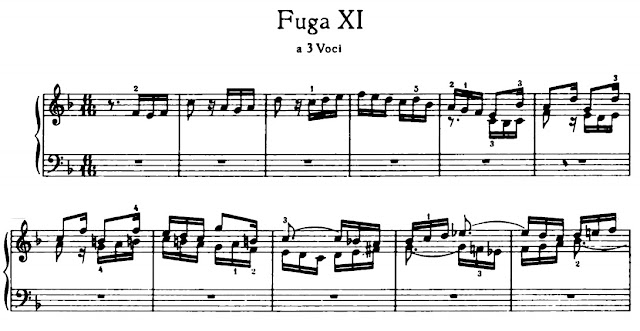Childhood) by Robert Schumann were gleaned from a group that originally contained thirty pieces. Schumann wrote them in 1838 while enduring a separation from his fiancé Clara Wieck, who was a concert pianist and away on tour.
The book of pieces was called Leichte Stücke (Easy Pieces), but Schumann came up with the descriptive titles for each after they had been composed.
 1. Von fremden Ländern und Menschen (Of Foreign Lands and Peoples) - Although Schumann called these 'easy' pieces, that doesn't mean they are for children or easy to play musically. They are a set of miniature tone poems for the piano that reflect moods and feelings of Schumann's own childhood. The first piece has a simple motive that reappears in differing guises in some of the other pieces.
1. Von fremden Ländern und Menschen (Of Foreign Lands and Peoples) - Although Schumann called these 'easy' pieces, that doesn't mean they are for children or easy to play musically. They are a set of miniature tone poems for the piano that reflect moods and feelings of Schumann's own childhood. The first piece has a simple motive that reappears in differing guises in some of the other pieces.2. Kuriose Geschichte (A Curious Story) - Schumann himself said the titles of the pieces were "nothing more than delicate hints for execution and interpretation." What exactly what this curious story is about is left to the listener's imagination.
3. Hasche-Mann (Blind Man's Bluff) - A variant of the children's game of 'tag', this game has a blindfolded person groping about for someone else to 'tag' while they avoid them.
4. Bittendes Kind (Pleading Child) - Whether for a toy, piece of candy or something else, this piece depicts the child begging for something. The piece ends on a 7th chord that doesn't resolve until the next piece
5. Glückes genug (Happy Enough) - This piece resolves the previous one and shows that the child has gotten what it wanted. Schumann told his soon to be wife Clara that the pieces of the set were "more cheerful, gentler, more melodic" than some of his other piano music.
6. Wichtige Begebenheit (An Important Event) - With heavy chords and a left hand melody in the bass in the middle section, this is an important childhood event indeed!
7. Träumerei (Dreaming) - Perhaps the most well known of the set, this piece is like a fine gem, perfect in its feeling and construction. It has become as a song of mourning due to it being played in memorials to World War II, especially in Russia. But it was originally meant to be played a little faster than a dirge.
8. Am Kamin (At the Fireside) - in the key of F major like the previous piece, this conveys the happiness and comfort of sitting by a fire in the evening.
9. Ritter vom Steckenpferd (Knight of the Hobbyhorse) - A picture of a child riding on a rocking horse swinging a toy sword.
10. Fast zu ernst (Almost Too Serious) - Written in G-sharp minor, this piece has the right hand melody tied over the bar line which gives a slight restless syncopation to the music.
11. Fürchtenmachen (Frightening) - Moderate tempo music in the major mode alternates with faster music in the minor mode in imitation of being scared.
12. Kind im Einschlummern (Child Falling Asleep) - Gently moving music that begins in E minor, goes to E major, and ends with the child drifting off in A minor.
13. Der Dichter spricht (The Poet Speaks) - A kind of summing up of what has gone before, and very appropriately titled, for Schumann was a poet of tones. The music ends in the key of G major as it began with the first piece.


































